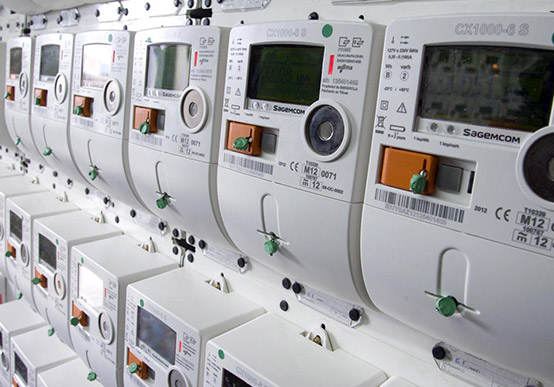ALL EQUIPMENT MONITORED AND CONTROLLED
The energy monitoring of the electrical consumption of an installation begins by obtaining the general electrical consumption data, to then measure the under-consumption of the most important circuits.
There are two ways of measuring general electricity consumption, by installing an analyser or a datalogger in the main panel, or by reading the data read by the fiscal meter, i.e. the one used by the marketing company for billing purposes.
The SenNet solution Remote metering of electric meters is a service for automatically downloading the load curve once a day, i.e. the consumption profile in the time stored in the company’s meter.
Technically the solution is based on a battery of SenNet dataloggers that operate in a scalable way with an automatic balancing system for redundancy reasons. The fact of using an equipment that integrates the modem and/or router makes the operation of the system much more efficient compared to traditional systems based on software and modem connected by series, alternative much less solid and effective.

REMOTE CONNECTION TO THE METERS
Communication with the meters is done remotely, accessing the equipment by one of these methods:
– Calling a GSM modem installed next to the meter. This can be the same modem installed by the utility company or a SenNet modem supplied for this purpose with a serial or optical probe connection to the meter.
– Calling a fixed telephone line, if so established in the installation.
– GPRS/3G IP connection to modem or cellular router
– IP connection to LAN
SERVICE PHASES
The remote metering of electric meters service is fully automated and consists of two main steps:
– Downloading the meter data. The service is responsible for verifying the integrity and completeness of the load curve, as well as establishing the necessary incremental retry algorithms.
– Sending the data to an FTP or SFTP server in CSV file format. The sending can be to an SFTP managed by SeNet or to a client FTP/SFTP server if commercially agreed.
DOWNLOAD MODES
The standard mode of discharge of the load curve is incremental energy values every fifteen minutes in all quadrants, but other modes can be set, if commercially agreed, such as
– Energy data every fifteen minutes at the end of the day (standard mode)
– Energy data every fifteen minutes in real time (without waiting for the end of the day)
– Data of instantaneous values every fifteen minutes (intensities, voltages, powers).
– Hourly data option instead of every fifteen minutes
METER TYPES
The SenNet solution for tele-calling allows the downloading of the loading curve of meters with protocols:
– IEC 870-5-102 protocol. This is the most common protocol for meters in tertiary and industrial installations.
– Protocol based on the DLMS/COSEM “suit” developed by the IEC (International Electrotechnical Commission), for those installations that offer the definition of ASDUS and access levels used.
REDUNDANCY
The remote metering of electric meters SenNet service is based on a redundant architecture, both in the tele-call equipment and in the communications with the meters, in order to guarantee the reliability and continuity of the service.
Redundancy is also included in the storage of the downloaded data, since in addition to being sent to an FTP or SFTP server, it is stored for 6 months in the same dataloggers that are in charge of the tele-call process.
APPLICATIONS
The SenNet solution is applicable to both consumer installations, whether tertiary or industrial, and photovoltaic parks.
CONSULT
SENNET IOT
PRODUCT QUICK GUIDE
PRODUCT QUICK GUIDE
INTEGRATED
THIRD-PARTY EQUIPMENT
THIRD-PARTY EQUIPMENT
INTEGRATED
PHOTOVOLTAIC INVERTERS
PHOTOVOLTAIC INVERTERS
INTEGRATED
PLATFORMS
PLATFORMS




